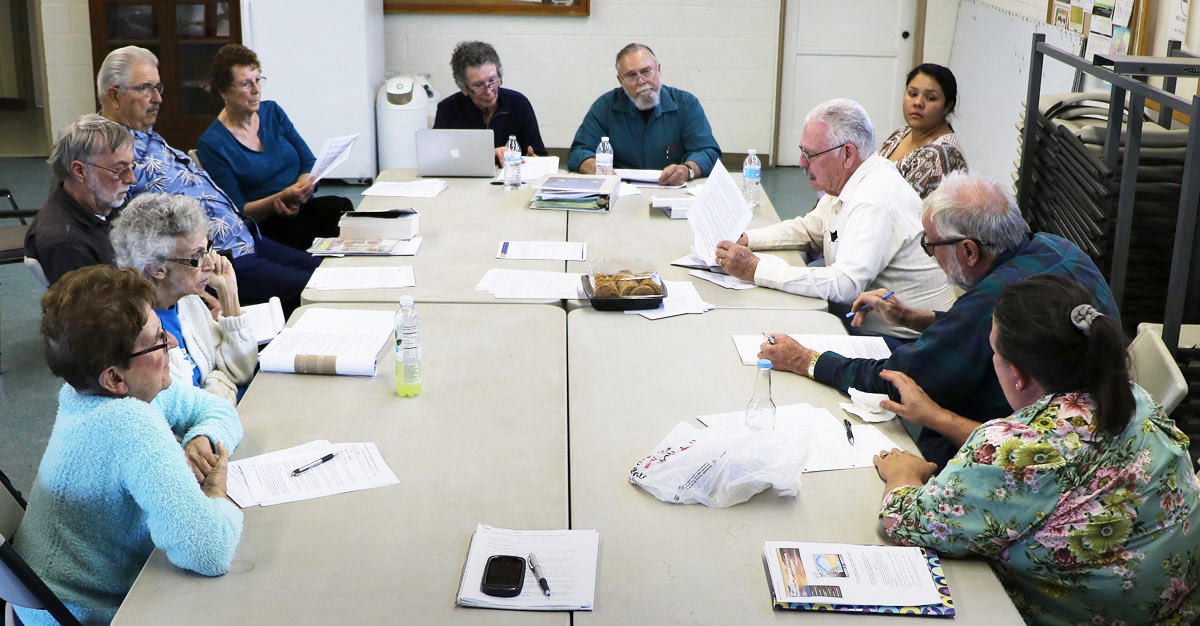|
The Newberry Springs Economic Development Association (NSEDA) introduced its
proposed Bylaws at a General Meeting on Tuesday, April 12, 2016, at the Newberry CSD building.
The proposed Bylaws were prepared by some of the members of the committee that had worked
on the failed Promise Zone.
The principle architect behind the Bylaws is Paul Deel, chairman of NSEDA's
formation committee, who appears to to have become a strong diciple of Chuck Bell, president
of the Lucerne Valley Economic Development Association (LVEDA). After Bell spoke at the
December 28, 2015 first meeting of NSEDA, Deel has been strongly attempting to duplicate NSEDA
as a clone of LVEDA.
The name NSEDA was chosen to resemble LVEDA, the Bylaws of NSEDA are in large
part a copy-and-paste of LVEDA's Bylaws, and suggestions given by Bell at the December meeting
have been strongly clung to by Deel.
LVEDA, like NSEDA, has not attracted a strong following of community
residents. Over the years, Lucerne Valley has prospered far better than
Newberry. This is in part due to having a larger population; having a Municipal Advisory
Council rather than a Community Service District (CSD); and having a religious group responsible
for the earlier development of a small commercial area. There are similarities between
Newberry and Lucerne, but the dynamics are different between the communities.
Lacking enterprising self-leadership, and apparently envious of what
Lucerne appears to have, the majority of those involved in NSEDA are attempting to copycat
LVEDA in the hope that something might rub off.
When there is a lack of confidence to succeed on one's own merits,
people will try to compensate by copying the works of others.
Ted Stimpfel, a community gadfly and member of the formation committee
on the Bylaws, feels that the Bylaws are far too structured. Stimpfel states that he
believes in the adage, "Keep it simple, Stupid." He asserts that less
Bylaw structure and rigidity allows for greater board flexibility and creativity.
Stimpfel expounds that Bylaws should only contain the minimum content
necessary to meet the minimum legal requirements; and that Bylaws shouldn't contain unnecessary
content that clutters a board's ability to perform. The majority of those attending the
Bylaw session disagreed, feeling a necessity for added structure. Despite the added
content that becomes mandatory requirements, Stimpfel stated that the finalized Bylaws still
represents a good workable document for the association.
NSEDA was amazingly successful in bringing together people for the Promise
Zone. The quickness and progress made by NSEDA has drawn the attention of the Newberry
Springs Chamber, that would like to enhance its own credibility by having NSEDA come under its
umbrella. A break in NSEDA's independence, however, would negatively impact NSEDA's
cohesiveness as some community members will not associate with the Chamber.
The proposed Bylaws presented at the NSEDA meeting included a most unusual clause:
|
The President will represent NSEDA at the Board of Directors of the
Newberry Springs Chamber of Commerse. If the Chamber of Commerce provides the
place on its Board, the NSEDA President will serve on that Board.
|
This abnormal clause, which has no business being inserted into Bylaws,
was deleted prior to the Bylaws being voted on and accepted; but it illustrates the move by
Chamber interests to hijack and slowly blend the independent NSEDA into the Chamber.
The Bylaws are written to target NSEDA becoming incorporated in the
State of California and then qualifying as a federal 501(c)(3) nonprofit. This
process requires approval of the corporation by the Secretary of State, then the corporation
being approved by the federal government for the non-profit status; followed by the State
recognizing the federal tax-exempt designation. The entire process usually takes
about 1-year.
• • •
In other matters, at the start of the meeting, Maria D. Monroy De Becerra
of Newberry Springs provided a heartfelt chronology of unsuccessfully attempting to start
two cottage size businesses within Newberry Springs. Both of her endeavors have been
blocked by the bloated requirements of the county.
During the meeting, the Chairman stated that the past shouldn't be
reminisced, and that the association needs to move on. Although not specifically
identified, it was a clear reference to NSEDA's blundering of the Promise Zone application.
As previously written in the Blotter, it is customary for grant teams to meet
and review their work, and identify their strengths and weaknesses after working on a
major grant. Obviously, some of the Promise Zone's team don't want a review; but
ignoring errors won't correct problems from reoccurring.
Part of the recovery program of Alcoholics Anonymous is the addict's
recognition and acknowledgment of one's actions. Denying and ignoring
problems in management procedures is ignorance.
Currently, much of NSEDA's strength rests upon the continued support of
Holly Shiralipour with the USDA. NSEDA's current momentum isn't expected to last
without the continuation of outside support. The group doesn't have the wherewithal
to accomplish its goals without outside intervention.
• • •
A few earlier related news blogs:
• • •
|

